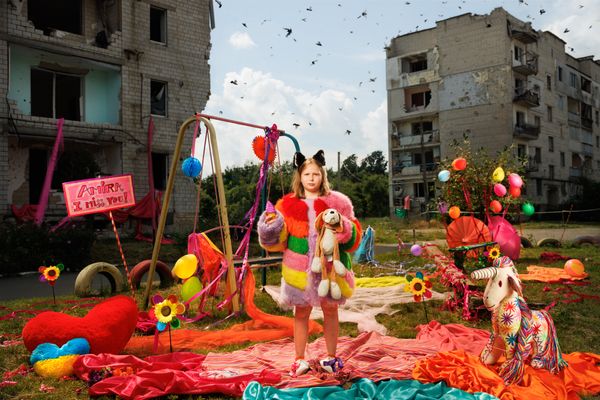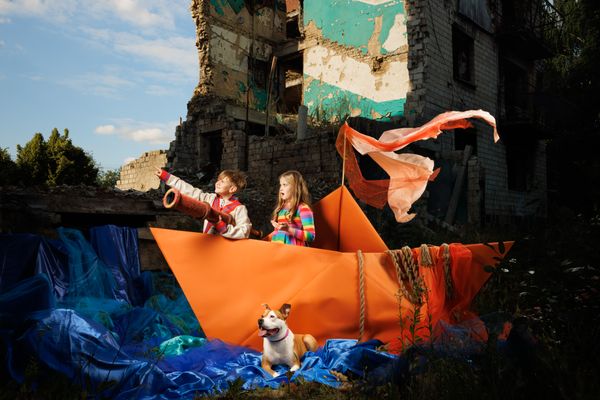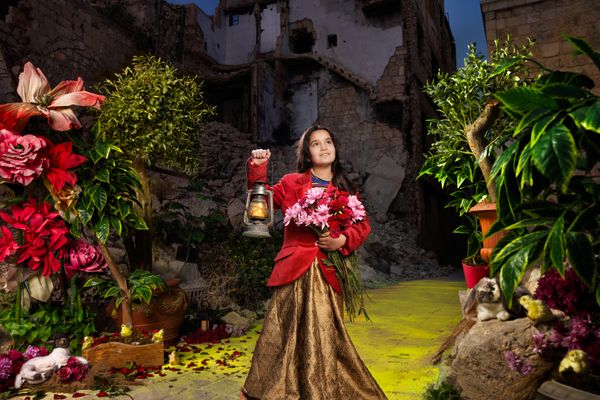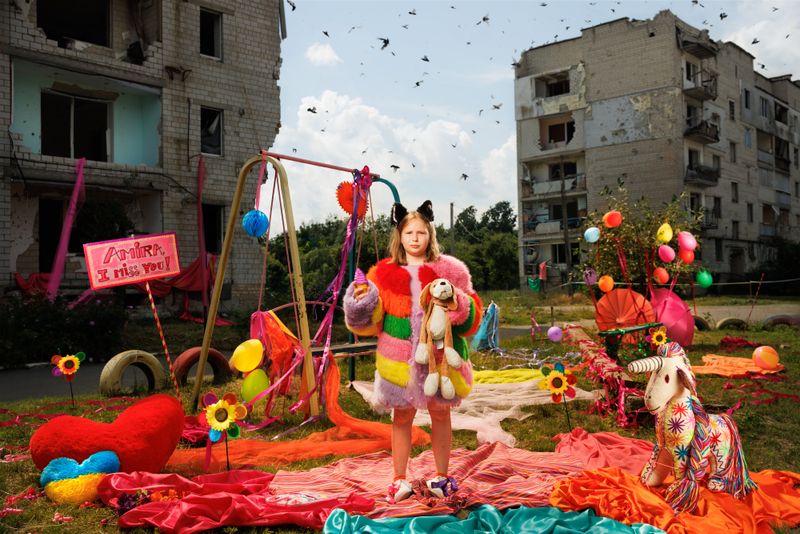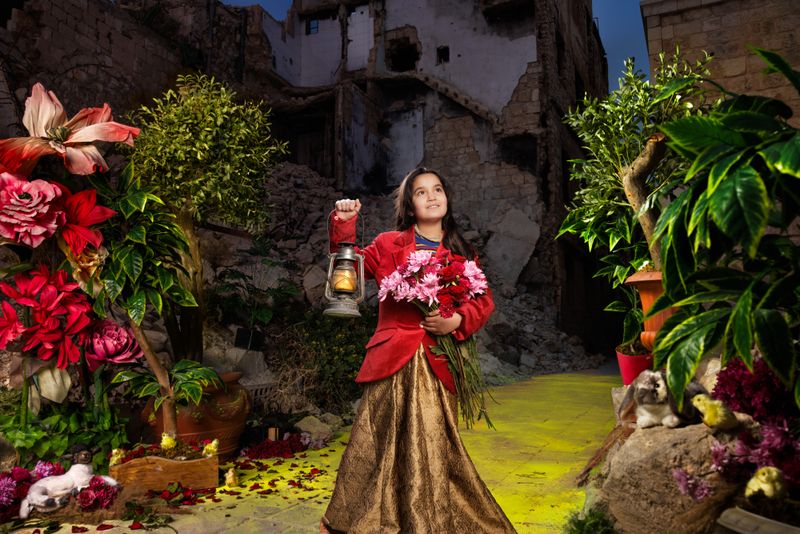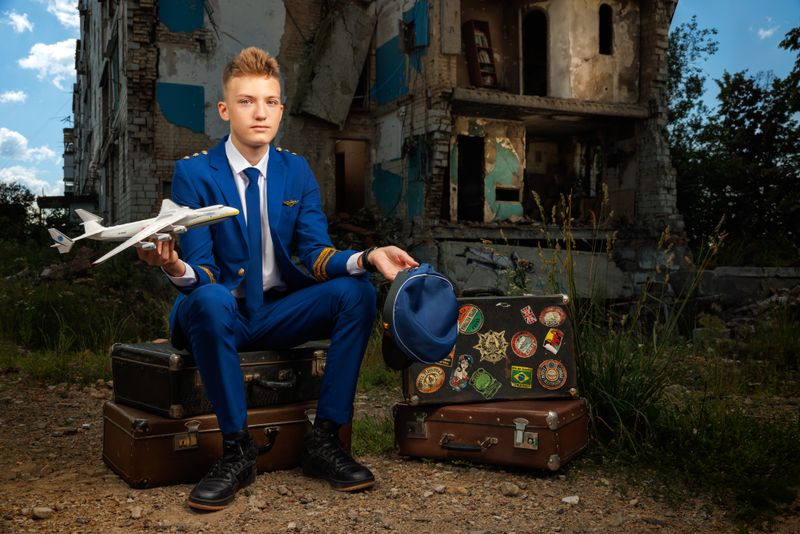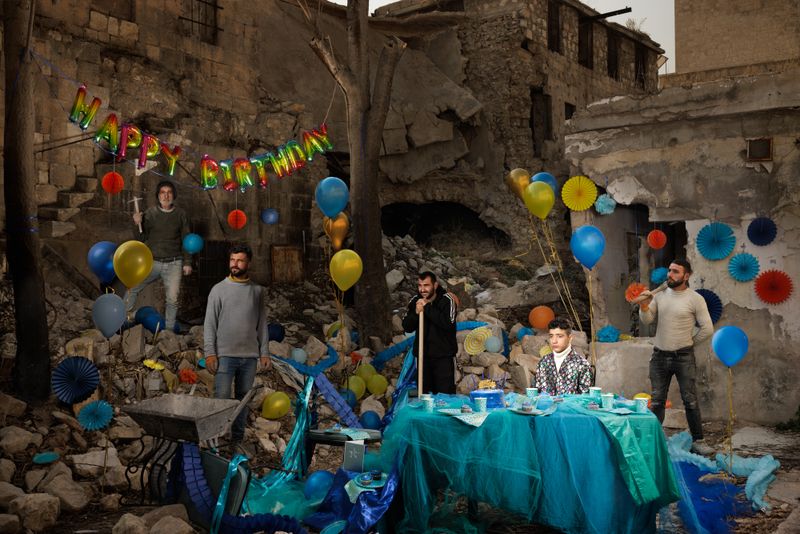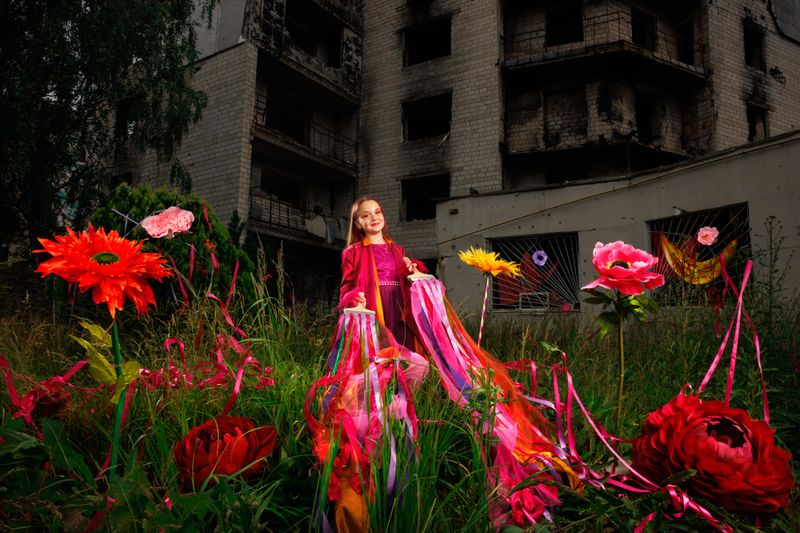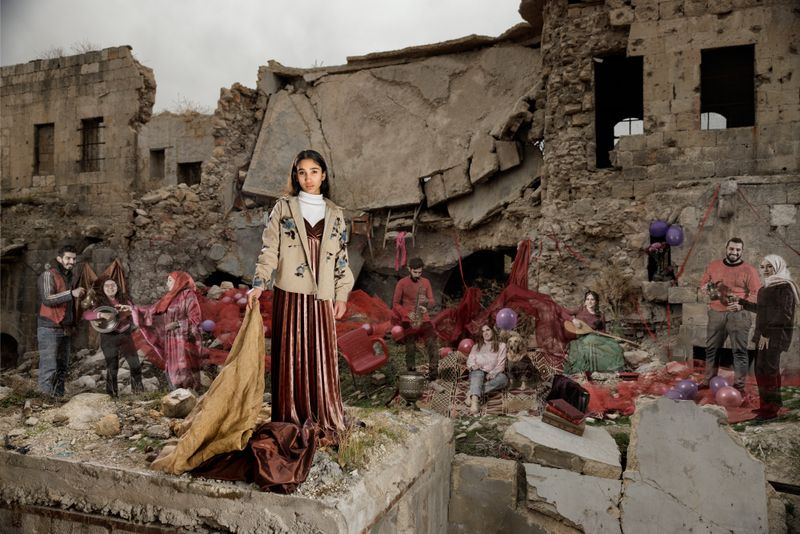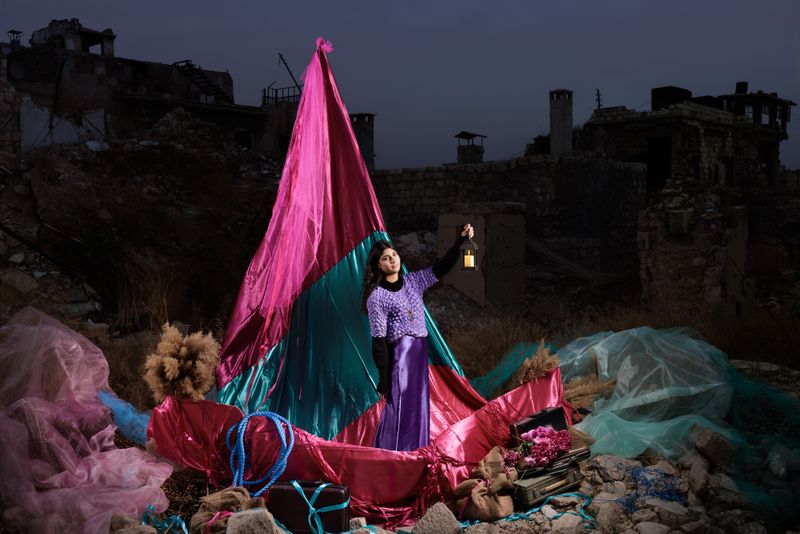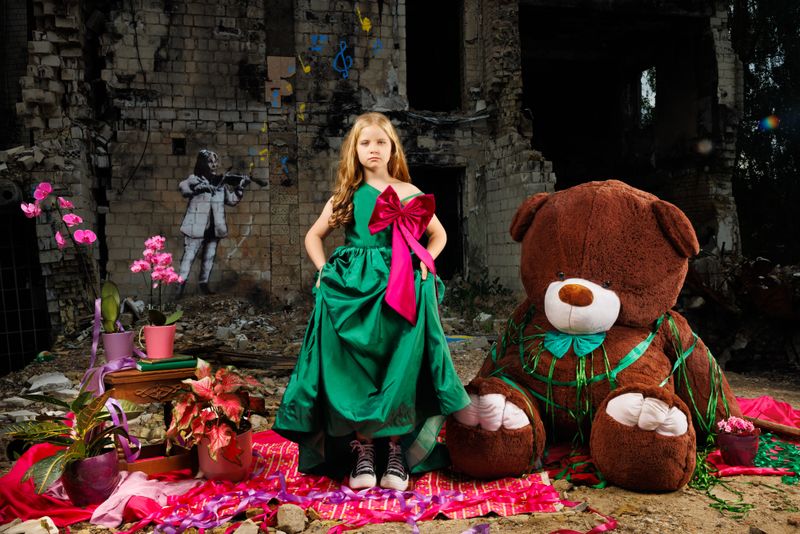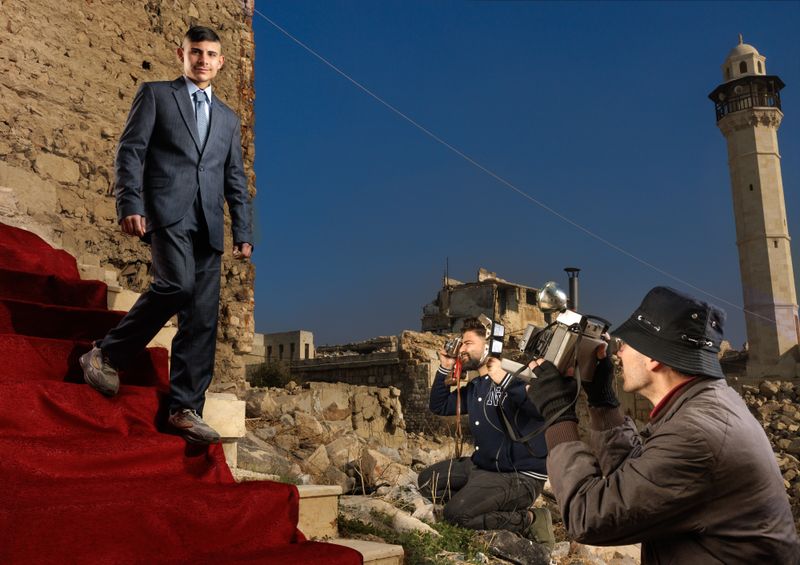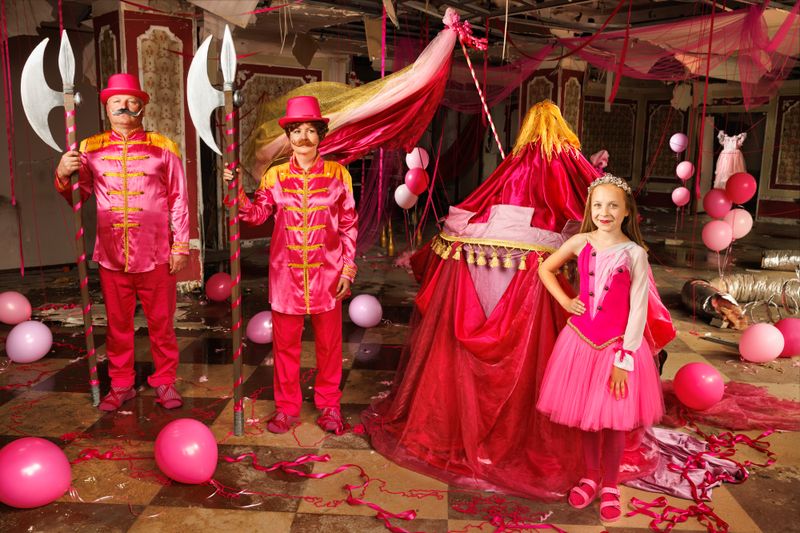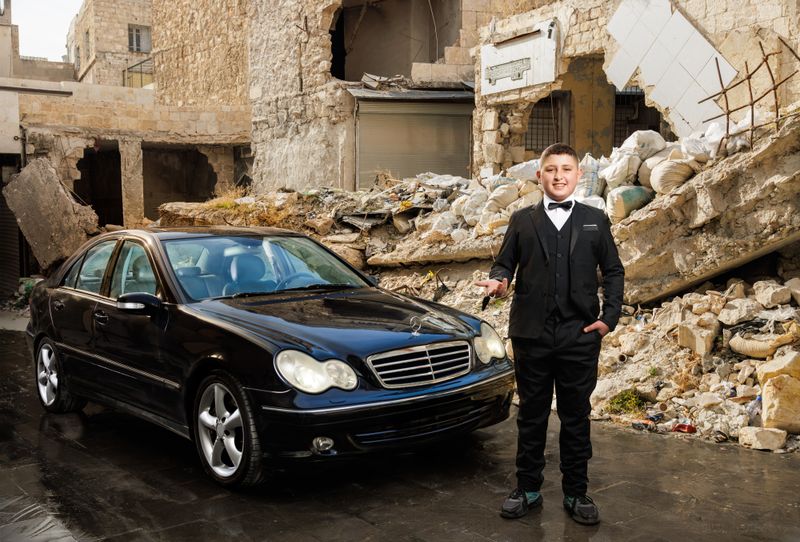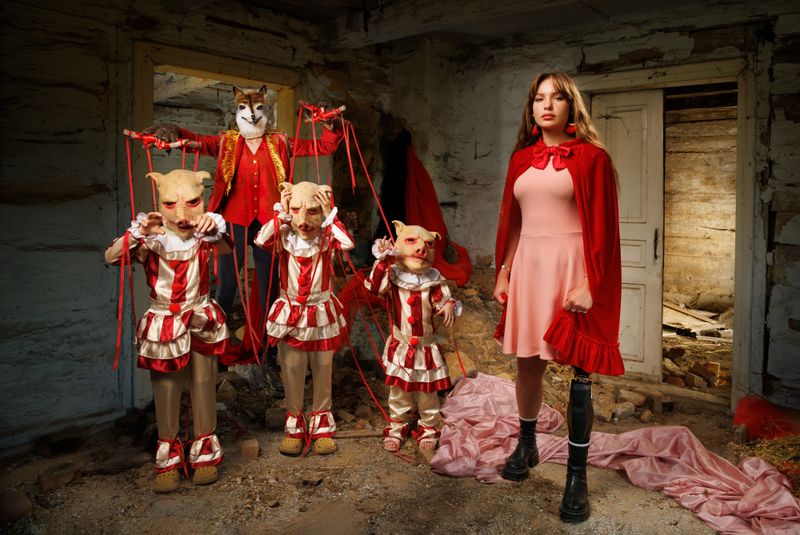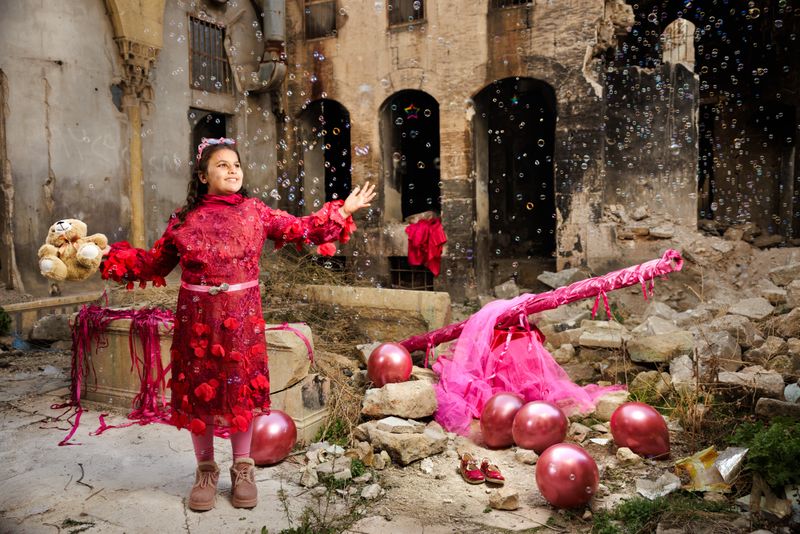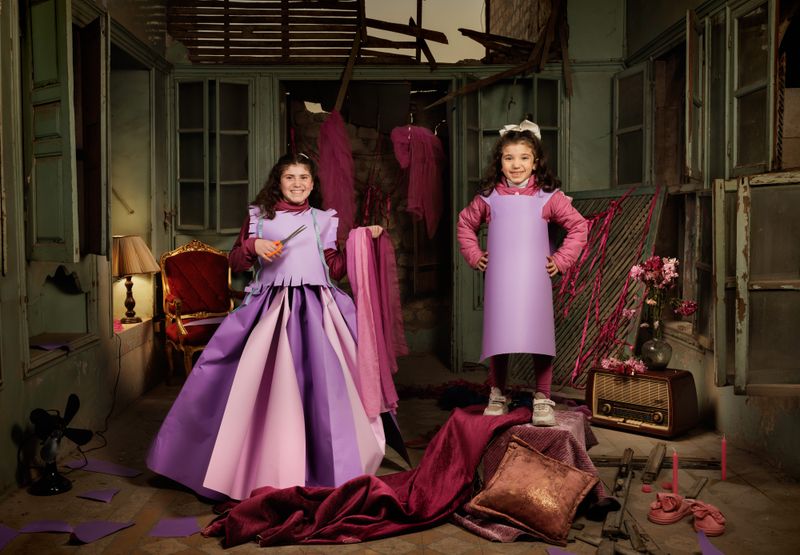Hope in the Rubble
-
Dates2024 - Ongoing
-
Author
- Locations Aleppo, Ukraine, Kyiv, Syria, Borodyanka
Created in Ukraine and Syria, this series externalizes children's inner worlds amid war. Using real mise-en-scène in war-torn areas, it transforms trauma into magical realist scenes, highlighting resilience, imagination, and the silent cost of conflict.
This project, created in Ukraine and Syria, is a visual exploration of how children psychologically endure war. It doesn’t document the violence directly—instead, it reconstructs the emotional landscapes of young survivors through magical realist imagery shaped by their own dreams, fears, and memories.
Each image begins with a conversation, at times with the support of art therapists, where I invite the children to speak about their experiences: what they’ve seen, what they’ve lost, and what they imagine when the world becomes too unbearable. These intimate dialogues are the foundation of the work. From them emerge carefully staged photographs in-situ, using real props and handmade costumes to transform raw emotion into visual metaphor.
These are not fantasies. They are emotional truths—where bunkers become castles, shadows stretch into monsters, and glimpses of hope flicker in impossible places. Imagination here is not escape, but survival. A fragile form of resistance. The final territory where a child retains some sense of control, agency, and meaning.
The magical realist settings reflect the ways children retreat into their imagination to cope with chaos. Amidst the collapse of their homes, the loss of parents, and the constant fear for their safety, they build internal worlds—spaces of light within the dark. The work captures these moments of mental refuge: when they find temporary comfort in memory, invent mythologies to understand death, or dream of safety beyond the ruins.
The Syrian chapter began in secret under one of the world’s most repressive regimes. It was developed quietly, over years, with the support of families who let their children speak. Only with the fall of the Assad regime could the project be completed and shared publicly.
In Ukraine, the process unfolded in real-time during the ongoing war. We worked through nightly bombings and air raid sirens—conditions that mirrored the children’s daily reality. Their participation was not abstract or distant; it was immediate, shaped by lived fear and constant disruption. Even as we built sets amidst the destruction, their lives were still unfolding within the war’s grip.
This body of work is, at its core, an anti-war statement. But more than that, it is a testimony to the psychological resilience of children who have had their childhoods interrupted, distorted, or erased by conflict. It aims to shift the viewer’s focus—from the visible devastation of war to its silent, long-lasting emotional toll.
This generation is suffering in ways many cannot fully comprehend. Children are being displaced, orphaned, and forced to live with the invisible weight of trauma. They are often the least responsible for war, and yet they carry its deepest scars. Through this project, I aim to use photography as a form of healing and expression—giving children a language for pain that often defies words.
The images are collaborative, not extractive. They center the child's perspective—reframing them not as passive victims but as co-authors of their own narratives. The therapeutic process is embedded into the visual language of the series, offering not just representation but recognition. Each photograph is a constructed act of reclamation: of story, of self, of the imagination’s enduring power even in the most shattered circumstances.
These moments—however fleeting—of joy, symbolism, or surreal logic reveal the deep humanity of children in war zones. They hold onto memories of those they've lost. They invent new worlds when the real one fails them. And in doing so, they remind us that even amidst destruction, the human spirit adapts, dreams, and survives.
This project invites the viewer to look beyond headlines and body counts—to see war not only as a geopolitical crisis, but as an emotional and psychological rupture in the lives of the young. How does a child rebuild meaning when everything around them is broken? What does survival look like?
By merging therapeutic dialogue with visual storytelling, this work offers a new way to witness conflict—one rooted in empathy, intimacy, and imagination. In a world that often silences or simplifies the experience of war’s youngest victims, this project seeks to amplify their emotional realities. It turns trauma into image, and image into a space where healing can begin.
Ultimately, this series is not about war itself—but about the human capacity to endure it. It is about how children survive through creation. How they build invisible worlds to hold onto something beautiful, even when the world outside offers none. It is about the architecture of the mind under siege, and the quiet, defiant spaces children carve out for themselves—where they are still whole, still powerful, still alive.
